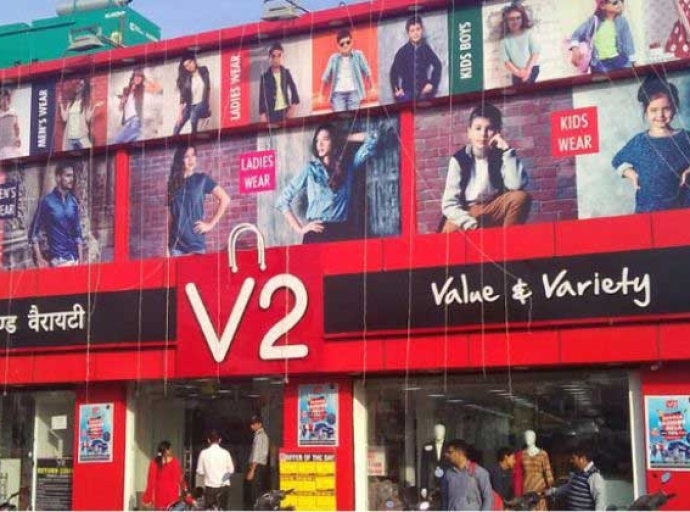20 March 2023, Mumbai
According to Hon'ble Piyush Goyal, Union Minister of Textiles, Consumer Affairs, Food, and Public Distribution and Commerce & Industry, making a strong/solid pitch urging the Indian textile industry hoping to export $100 billion worth of goods in the coming five to six years, bringing the total value of the sector's home and foreign markets to USD 250 billion.
The Value of Aspirational but Attainable Targets As we move ahead confidently in the Techade well contemplated by India's Hon'ble PM, Narender Modi.
In 2021–2022, the nation's textile industry shipped out over USD 42 billion. Piyush Goyal has also made a case for the Textile manufacturing community pressing the paddle on their efforts to begin securing cotton to meet their demands something China has done successfully through the decades.
Today it is a business imperative to deliberate, and ideate involving multi-stakeholders viz. bringing in fresh blood and giving all new perspectives.
Embracing the Era of Collaboration
Manufacturers should start acquiring cotton to satisfy their expectations, according to the Minister of Textiles, Commerce & Industry, who spoke to members of Export Promotion Councils via video conference here.
In addition, a meeting between everyone involved in the cotton sector is necessary to explore how to track cotton and guarantee the quality of cotton-based goods.
The objective is for textile exports to reach $100 billion over the next five to six years and do what it takes to be there as a concerted effort across the trade value chain involving all the stakeholders in this vibrant sector well backed up by the responsive listening administration.
Pressing the need for a cohesive trade approach of engagement and indulging in sustained industry dialogues charting out a holistic approach ensuring the timely oversight mechanism looking into the aspect of track & traceability of cotton and better value-added cotton products.
Deciphering the Numbers
He claimed that the sector's real economic value, considering home and foreign markets, will be worth USD 250 billion if realized. According to recent data from the agricultural ministry, cotton production is expected to reach 34.19 million bales in the year 2022–23 (July–June), up from 31.20 million bales in the previous year. One of the essential Kharif crops is cotton.
Beginning in October, cotton crops are being harvested. Goyal stated that money is available through the Textile Mission and should be used in new initiatives, adding that the G-20 may consider showcasing the potential of the textile industry. The finance minister recently proposed a series of shopping festivals and suggested that industry officials participate.
Every journey has a start
Providing valuable insights; Upendra Prasad Singh, Textile Secretary while felicitating the winners of the TEXPROCIL Export Awards 2020 – 2021 on 23rd August 2022 in Mumbai, had informed that the govt. has commissioned the PLI Scheme, MITRA Parks Scheme, and GATI Shakti Scheme with a view to attracting investments in the sector, reforming infrastructure, and addressing logistic bottlenecks.
Manoj Kumar Patodia, then chairman – of TEXPROCIL stated that textile and apparel (T&C) exports achieved their highest-ever level in the year 2021 – 2022 with an export turnover of USD 44.4 Billion, growing by 40% over the previous year & during the same period, the export of cotton textiles (including raw cotton) grew by 54%, reaching a level of USD 16.42 Billion outlining the scope of cotton as a core raw material for the Indian textile industry and the critical role it plays in the overall export growth.
This commendable performance is a testament to the resilience of the Indian textile industry, which has been able to tide over the difficult & challenging COVID-19 pandemic times and the subsequent disruptions caused by the outbreak of the Russia & Ukraine war in global supply chains (GSCs).
The considerable growth in exports through the years implies a growing underlying demand trend for Indian textile products & its improving acceptance and visibility in the world market, which presents a bright picture of a growing opportunity for the sector on the back of its enhanced competitiveness expanding its footprint globally both in conventional & non-conventional sectors.
United we stand
Networking no more in silos; Senior leaders from all 11 Export Promotion Councils under the Ministry of Textiles convened the virtual meeting, including the Export Promotion Council for Handicrafts, the Apparel Export Promotion Council, and the Cotton Textile Export Promotion Council. Participants in the discussion also included members from business organizations, including the Southern India Mills' Association, Tiruppur Exporters Association, and the Confederation of Indian Textile Industry as they say," You walk far when you walk together".
World of Interconnectedness; Goyal suggested that a two-day meeting be set up to consider fresh suggestions for boosting the textile industry. Young people should make up at least 50% of the attendees. There should be participation from Quality Control of India (QCI), business, DPIIT, finance, banking, and export insurance for a comprehensive engagement to discuss overarching issues.
India is in talks with other countries to accelerate FTAs or PTAs (preferential trade agreements) and this dialogue has continued with the United Kingdom, and the European Union among others to galvanize merchant exports on the whole as a journey ticking the right boxes.
As per the construct of the textile industry, MSMEs constitute around 89% share of businesses engaged & serving this sector, therefore it is only incumbent upon the Government should facilitate MSMEs achieving this goal by +ve policy intervention to further give an impetus to these manufacturing units which is key to success.
Balancing Ambition and Realism
Blockers vs Impediments; Make no mistake the Indian textile industry currently is posed with several challenges such as cost inflation/heightened raw material costs, fierce competition, and changing consumer preferences and choices.
So is pivotal for this dynamic sector where novelty has worn off and where by far all the stakeholders are necessitated as a common denominator focuses on innovation, sustainability, and efficiency to maintain the growth momentum and stay afloat and ahead of the curve.
The textile ministry said on Thursday that the government had set an "aspirational" goal of $100 billion for textile and apparel exports over the next five years. It urged the sector to seize the opportunity presented by a shift in the global market where China is losing market share in the labor-intensive industry.
Due to the Covid issue, India's exports of textiles and related goods fell 10% from the previous year to barely $30.4 billion in FY21. Due to a robust economic recovery in important markets like the US and the EU, exports increased by 87% yearly in the first five months of the current fiscal year to reach $16.6 billion. But, the goal still needs to be loftier.
A few factors getting into newfound optimism are growth drivers such as the PLI scheme for textiles covering 40 man-made fibre (MMF) garment items, 14 MMF fabric goods, and 10 technical textile products. Furthermore, in support to enhance the competitiveness of the sector, the government notified Complimentary schemes like the setting up of 7 PM mega integrated textiles region and apparel park (MITRA) parks with a plug-and-play infrastructure can be game changers.
Moreover, the clamor for CHINA Plus One/ Credible alternative to China is getting louder. The semblance is Indian Textile sector is in a sweat spot currently.
Latest Publications


































